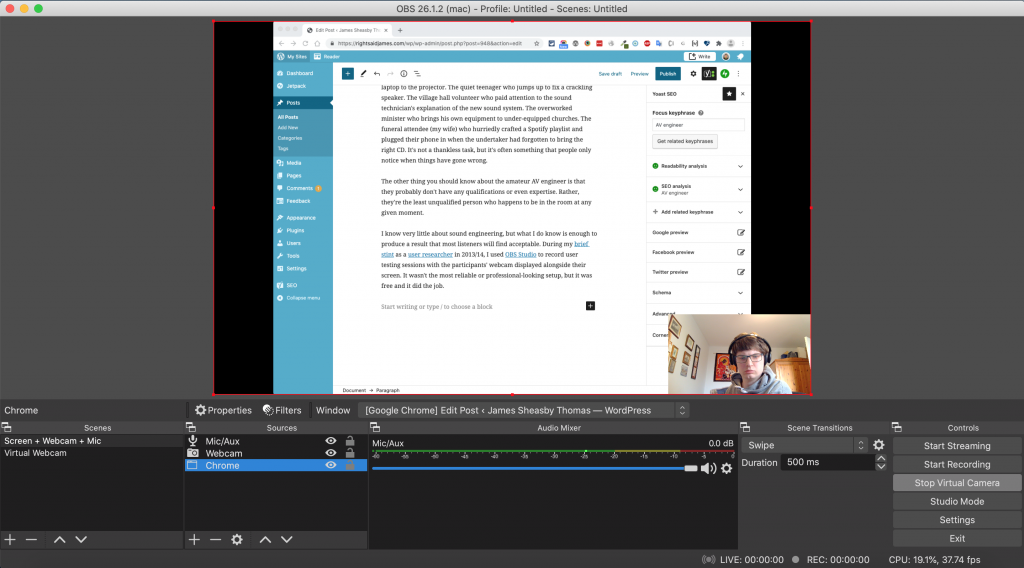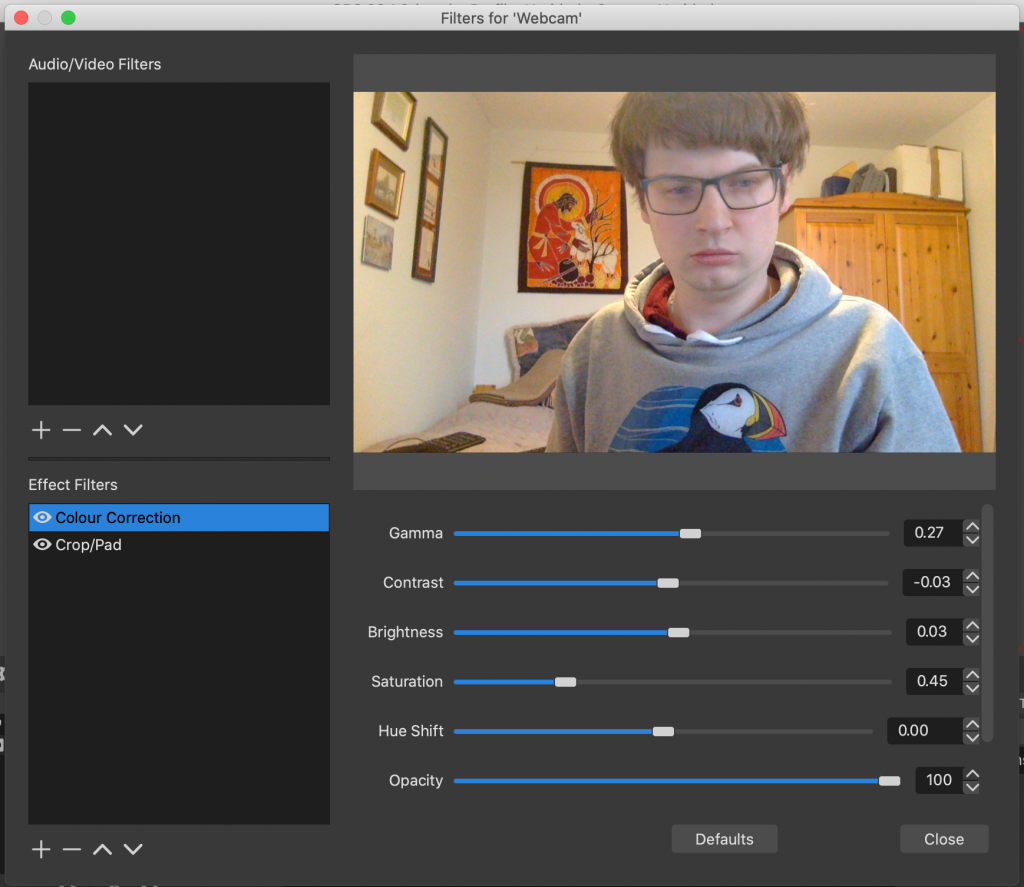You can find them everywhere. Hiding among church congregations, lurking in village halls, appearing suddenly at rehearsals, and ever-present in offices around the world. No one gave them this role, and it might not be a job that they want to be doing. Nonetheless, they’ve been here forever and won’t be going away any time soon. I speak not of cleaners, mice or even lawyers. No, I refer to the amateur AV engineer (aka audiovisual engineer).
What’s an amateur AV engineer?
I’m talking about the people who advance the slides, tweak the sound system or connect the laptop to the projector. The quiet teenager who jumps up to fix a crackling speaker. The village hall volunteer who paid attention to the sound technician’s explanation of the new sound system. The overworked minister who brings his own equipment to under-equipped churches. The funeral attendee – my wife – who hurriedly crafted a Spotify playlist and plugged their phone in when the undertaker had forgotten to bring the right CD. It’s not quite a thankless task, but it’s often something that people notice only when things have gone wrong.
The amateur AV engineer probably doesn’t have any real expertise. Rather, they’re the least unqualified person who happens to be in the room at any given moment.
My experiences as a reluctant AV engineer
I know very little about analogue sound engineering, but I know enough to produce a result that is just about acceptable. I know what to touch (or not touch!) on a soundboard, which cables go into which holes, and how to avoid feedback or underwhelming output from mics or other input sources. But if you ask me to run the sound for your event then I’ll tell you to find someone else. That’s assuming I even acknowledge your email.
My digital AV skills are a little more developed. During my brief stint as a user researcher in 2013/14, I used OBS Studio to record user testing sessions with the participants’ webcam displayed alongside their screen. It wasn’t the most reliable or professional-looking setup, but it was free and it did the job. More recently, I’ve been playing around with OBS Studio’s Virtual Camera feature to position one or more windows alongside my webcam feed in Zoom or Google Meet.

Last month, I helped my father-in-law (a Methodist Minister) to setup OBS for recording segments of his weekly YouTube services. Using OBS to cue audio (or record it live) while transitioning PowerPoint slides is much smoother than overlaying recorded audio on top of pre-recorded slideshows.
Nonetheless, if you ask me to run the AV for your online conference I’ll probably ghost you until you stop asking.
So what’s the point?
Tools like OBS Studio and Audacity are free, open source and cross platform. With a little experimentation, any budding content creator can produce decent-quality content from their home office or living room. Even if you’re not delivering content or hosting live presentations, you can use free tools to get the most out of virtual meetings. For example, OBS lets you adjust the colour of your webcam to compensate for poor light conditions:

Almost everyone’s an AV engineer now
In the age of COVID-19, more and more people have had to learn these AV skills for themselves. Of course, most of us aren’t producing videos or podcasts. Nonetheless, the teenagers, relatives and AV know-it-alls that others previously relied upon are also potential vectors for infection. So people in all walks of life – clergy and parishioners, grandparents and grandchildren, employers and employees, service providers and service users – have had to manage the best they can and discover reliable solutions using trial and error. The result isn’t perfect, but a much wider group of people now have this base knowledge!
Almost.
Many millions of people have experienced loneliness, pain and suffering as a result of this pandemic. Even if you’ve avoided the worst effects of COVID-19, you’re almost certainly feeling the effects of social isolation. Technology helps us to alleviate this, but not everyone is able to take advantage. When we develop new ways to communicate and collaborate with each other, we should be mindful of the people who might be left behind. As I say in my accessibility blog posts and talks, making products and services available to everyone is simply the right thing to do.
Bridging the digital divide
Many people are excluded from digital technology for financial or logistical reasons. Even those with financial means may still lack the knowledge or tools to engage with technology. This includes school children, job seekers, disabled people and elderly people. Charities like AbilityNet and Good Things Foundation do amazing work in this area, but many of their initiatives have been disrupted by the pandemic.
A recent success story is Oak National Academy, who provide free lesson plans and teaching resources to teachers and parents. As of February 9th, their website has been zero-rated for data by the main UK mobile providers. This was no mean feat, but now anyone with a phone or mobile hotspot can access this content for no extra cost.
So what can you do? Other than helping marginalised people you already know, you can also ensure that the digital tools you’re using are truly inclusive. If you know that a tool excludes some people, you could advocate for accessibility, user experience or performance improvements. And if a tool is extremely lacking in these areas, vote with your feet and switch to a better one.
The most technologically advanced solution is not always the best. Working to the lowest common denominator (connection speed, digital knowledge, equipment quality) is often the best way to get the most out of a given team of people.
Resources
- Make virtual meetings better with this OBS trick – opensource.com. Note that as of OBS 26.1.x you can use Virtual Cameras without a plugin.
- The Best Lighting for Video Calls – The Strategist UK
- How to Pull Off a Professional Video Call From Home – New York Times Wirecutter
- How to start live-streaming in OBS – The Verge
- Editing Podcast Audio in Audacity – Podcast.co
- Accessibility Overviews for Zoom, Google Meet, Skype and Teams
- COVID-19 and the digital divide – Parliamentary Office of Science and Technology
- Using subtitles, captions and transcripts for accessibility – Scope Big Hack
- Inclusive design lessons from a post-pandemic world – AbilityNet
- The complete Zoom guide – ZDNet

Leave a Reply